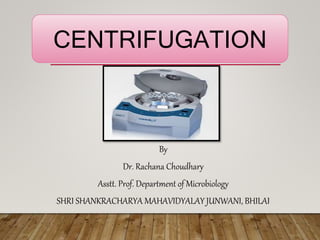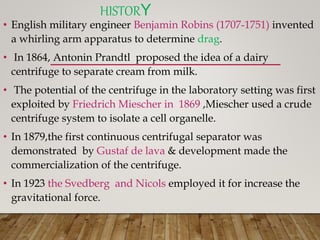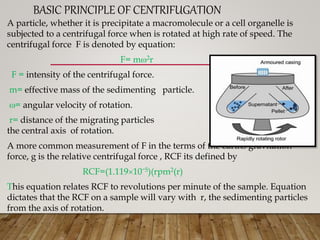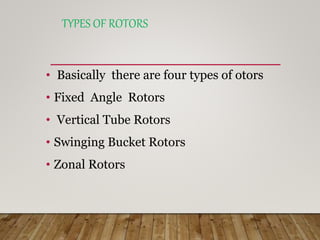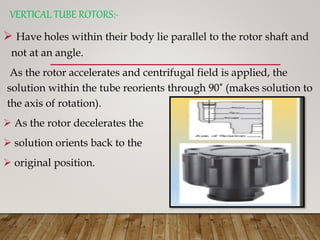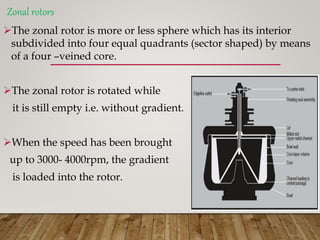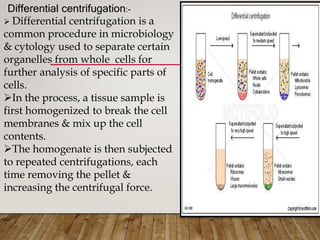The document provides an extensive overview of centrifugation, detailing its history, principles, types of rotors, techniques, and applications in both laboratory and industrial settings. Centrifugation utilizes centrifugal force to separate components based on their density, with various methods such as differential and density gradient centrifugation for isolation of biological materials. Key factors affecting sedimentation coefficients, such as molecular shape and weight, as well as precautions for safe centrifuge operation, are also discussed.
